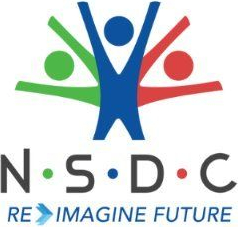The Shifting Sand of Future of Work – Innovation vs. Convention

Part 2
The future of work is a constantly shifting target, requiring organisations and leaders to continuously adapt and innovate. While maintaining traditional structures may provide short-term stability, the reluctance to adapt carries long-term risks.
In Part 1, we had elaborated on how the nature of work is undergoing an irreversible transformation influenced by generational shift, technological advancements, evolving workforce expectations, and shifting organisational structures. Let us now focus on how this necessitatesa re-evaluation of leadership approaches, and how resistance can be counterproductive.
Implications for Future Leadership
The changing landscape of work demands a new set of competencies from leaders:
- Technological Proficiency: Leaders must understand and leverage emerging technologies to drive organisational success. This includes integrating AI and automation to enhance productivity and innovation.
- Emotional Intelligence: As remote work becomes more prevalent, leaders need to foster trust and engagement without the benefit of physical presence. Developing strong interpersonal skills is crucial for maintaining team cohesion and morale.
- Adaptability: The rapid pace of change requires leaders to be flexible and open to continuous learning. Embracing new ideas and approaches is essential for navigating the evolving business environment.
- Inclusive Leadership: Promoting diversity and inclusion is not only a moral imperative but also a driver of innovation and performance. Leaders must create environments where diverse perspectives are valued and leveraged.
Case Study: IBM’s Transformation
IBM’s journey exemplifies the necessity for leadership evolution in response to changing work dynamics. Facing challenges in a rapidly shifting tech landscape, IBM appointed a Chief Digital Officer to spearhead its digital transformation. This role was pivotal in integrating AI and cloud computing into IBM’s core operations, leading to new service offerings and improved client solutions. The leadership’s commitment to embracing technological change and fostering a culture of continuous learning has been instrumental in IBM’s resurgence.
The transformation of work is an ongoing journey, driven by technological innovation, evolving employee expectations, and the need for agile organisational structures. Leaders who proactively adapt to these changes, cultivate inclusive and flexible environments, and leverage technology to enhance human potential will be well-positioned to guide their organisations toward sustained success.
Lessons from Microsoft’s Digital Evolution
In 2020, Microsoft made a decisive shift to embrace a hybrid work model, driven by both necessity and opportunity during the COVID-19 pandemic. The company introduced a “hybrid workplace flexibility guide,” encouraging employees to choose remote or on-site work based on their needs. Alongside flexible work arrangements, Microsoft invested heavily in reskilling its workforce to use AI and automation tools, such as Microsoft Teams and Azure AI, to boost productivity and collaboration. This transformation not only enhanced employee satisfaction but also helped Microsoft sustain innovation during turbulent times.
The Resistance to Change: Why It Happens
The winds of change have not touched every organisation as some continue to cling on the classical ways of working. There might be grains to truth in their reasoning. Leaders are worried that innovation might suffer as human interaction becomes minimal in remote working. Some are concerned about loss of productivity.
- Concerns About Productivity:Many leaders worry that remote or hybrid work reduces productivity. In industries like finance and consulting, where output is tightly linked to intense collaboration, companies argue that physical presence fosters faster decision-making. Netflix, under its former CEO Reed Hastings, resisted remote work for similar reasons, citing that it was “not positive” for workplace dynamics.
- Cultural Cohesion:Maintaining a strong corporate culture is another common rationale for resisting change. Executives fear that remote work erodes team cohesion, creativity, and the serendipitous “watercooler moments” that fuel innovation. Some tech companies, like Amazon, have rolled back flexible work policies, requiring employees to be on-site for a minimum of three days a week to reinforce cultural alignment.
- Operational Challenges:Implementing change often comes with logistical hurdles. From reskilling employees to redesigning workspaces and deploying new technologies, the shift can be costly and disruptive. For organisations with established practices, such as General Motors, which has historically operated through hierarchical decision-making, embracing a flatter, agile model can feel risky and counterproductive.
Case Studies of Resistance
- Apple’s Return-to-Office Mandate:Despite its innovation-driven reputation, Apple has faced significant pushback from employees over its strict return-to-office policy. Employees argued that the policy contradicted the company’s stance as a leader in digital tools and cloud-based collaboration. However, Apple leadership maintained that in-person work was essential for creativity and collaboration, particularly in hardware development.
- Elon Musk’s Mandate at Tesla and Twitter:When Elon Musk took the reins at Twitter, he swiftly ended the company’s flexible work policies, mandating that employees return to the office full-time or leave. A similar directive at Tesla framed remote work as a lack of commitment. Musk’s approach underscores a belief that physical presence equals productivity, even as other tech companies embrace hybrid models.
The Costs of Resistance
While maintaining traditional structures may provide short-term stability, the reluctance to adapt carries long-term risks:
- Talent Drain:Companies resisting change risk alienating top talent. According to a study by McKinsey, 87% of workers prefer flexibility in where and how they work. Organisations enforcing rigid policies face higher attrition rates, as seen in the exodus of Twitter employees following Musk’s mandates.
- Competitive Disadvantage:Companies slow to adopt AI, automation, or hybrid work models may fall behind competitors that leverage these tools to drive innovation. For example, while Netflix initially resisted remote work, other streaming platforms like Disney+ quickly adapted, gaining agility in global markets during the pandemic.
- Brand Reputation:Resistance to change can harm an organisation’s employer brand, especially among younger generations. Firms like Amazon have faced public criticism for perceived rigidity, potentially making them less attractive to digital-native talent pools.
Leadership’s Role in Balancing Tradition and Transformation
The resistance to change often stems from leadership’s instinct to preserve proven models, but the best leaders recognise the need to evolve while honouring tradition. For example:
- Procter & Gamble (P&G) balances innovation with continuity by maintaining its legacy of in-person collaboration while embracing digital transformation. Its “Future of Work” initiative integrates flexible work with advanced tools for global teamwork.
- Ford Motor Company has adopted a hybrid approach, blending traditional on-site work for manufacturing roles with remote options for white-collar employees. This approach respects its legacy as an automotive leader while adapting to workforce expectations.
Two Diverging Paths
The future of work is not one-size-fits-all. While companies like Microsoft, Atlassian, and Walmart are embracing transformation to stay ahead, others like Goldman Sachs and Tesla are doubling down on traditional models. The challenge for leaders is finding the right balance – leveraging the best of both worlds to drive innovation while preserving what makes their organisations unique.
For leaders navigating these choices, the question becomes: Are you building for the workforce of today or the workplace of tomorrow? The answer will define not just your organisation’s future but also its ability to attract, retain, and inspire the next generation of talent.
The future of work is a constantly shifting target, requiring organisations and leaders to continuously adapt and innovate. For the next generation of leadership, success lies in embracing these changes – not just to keep pace but to shape the direction of work itself. As we move forward, fostering cultures of learning, flexibility, and inclusivity will be the key to unlocking the full potential of the workforce.
[Concluded]


